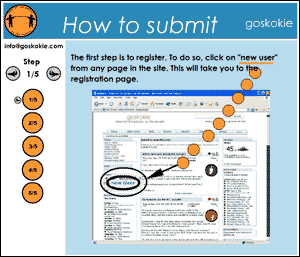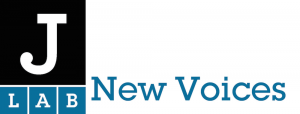By Nathan Alderman, J-Lab Online Editor
 Six students. Eleven weeks. Zero budget. That’s what it took a team of New Media grad students from Northwestern University to harness some open-source software and create a community news site by and for the people of Skokie, Ill.
Six students. Eleven weeks. Zero budget. That’s what it took a team of New Media grad students from Northwestern University to harness some open-source software and create a community news site by and for the people of Skokie, Ill.
By the end of the quarter, they discovered that building a hyperlocal community news site is relatively easy. Getting the community to embrace it can be a whole different matter. Powerful features and high technology alone didn’t guarantee their site’s success.
GoSkokie.com was a spring 2004 project for students Leah Gliniewicz, Sara Oceguera, Gina Petrelli, Vivek Shankar, Mike Tumolillo and Jason Tuohey. Rich Gordon, chair of the New Media Program at the Medill School of Journalism, assisted them. Their final report on GoSkokie.com describes what they learned.
The students selected nearby Skokie after researching demographics from the U.S. Census. They reported that Skokie was “in many ways a typical suburban community.” Largely white and middle-class, it nonetheless housed one of the Chicago area’s fastest-growing immigrant populations. Its residents were mostly between the ages of 25 and 54; its average household income around $69,000. Skokie’s demographics also match those of people most likely to create Web content as described in a 2003 Pew Internet in American Life report. The students also researched the experiences of other community journalism sites.
Without money for a commercial content management system, the students turned to free, open-source software. GoSkokie.com is powered by Geeklog, a publishing engine designed for group Weblogs. The students praised Geeklog’s ability to register and support multiple users, its flexible levels of editor and user access control and a diverse, customizable array of additional elements such as message boards and weather data that could easily be added to a site.
Advance.net, the Web arm of media publisher Advance Communications, sponsored the students’ project and donated hosting for the site, thanks to its president and creative director, Jeff Jarvis.
“Getting the site up and running was easy compared to promoting it,” said Sara Oceguera.
To spread the word about GoSkokie, students talked with community leaders, passed out flyers at Skokie stores and institutions, and attended community events. They urged local schools and libraries to contribute content and asked Chicago-area blogs to link to their site. They also tried to land interviews and coverage from local newspapers, TV and radio stations. One of their most successful publicity efforts was entirely accidental. Skokie’s local government threatened the sue the students, asserting that a graphic on the site resembled the village’s official seal. The dispute landed the GoSkokie team an article in the Chicago Tribune. In total, the students spent less than $1,700 for all their marketing efforts.
Video and audio content proved to be big draws for GoSkokie users who were more attracted to short, informal pieces than stories that read more like newspaper writing.
While the students found it relatively easy to get people to read GoSkokie, they discovered that many Skokie residents were hesitant or uncertain about how, or how much, they could participate on the site. “Even when people posted to the site,” Gliniewicz said, “some still did not understand the concept of the blog, and would ask us to post content for them.”
Another drawback was that the students were not Skokie natives and lacked insider knowledge of the town. With few controversial stories to cover that might spur local interest in the site, the students struggled to engage community members to participate.
By the end of their experiment, the students had registered more than 200 GoSkokie.com users and were getting more than 100 site visits each day. But after the quarter ended and students stopped actively maintaining the site, that traffic dropped off dramatically. As of November 2004, the site remained open with a few new stories posted, but none of the site’s columns had updated since classes ended in May.
“We are getting some, but not a lot, of community participation,” said Gordon, the students’ professor, in November 2004.
Gordon’s successive classes of graduate students continued to post Skokie news stories to the site and community members had made some new contributions. “At the end of this quarter,” Gordon said, “we will have to make a decision about whether to continue the site in this mode or do something else.”
Gliniewicz advised anyone looking to launch sites similar to GoSkokie.com to partner with existing newspapers, city government or other local institutions. “People may have more of a built-in comfort level if the site is associated with something they’re already familiar with,” she said.
Jason Tuohey also recommended targeting young communities with existing interests in blogging or digital photography. “Some communities already have the makings for a citizens’ Web site in place,” he said. “They just need someone to tie it together.”



